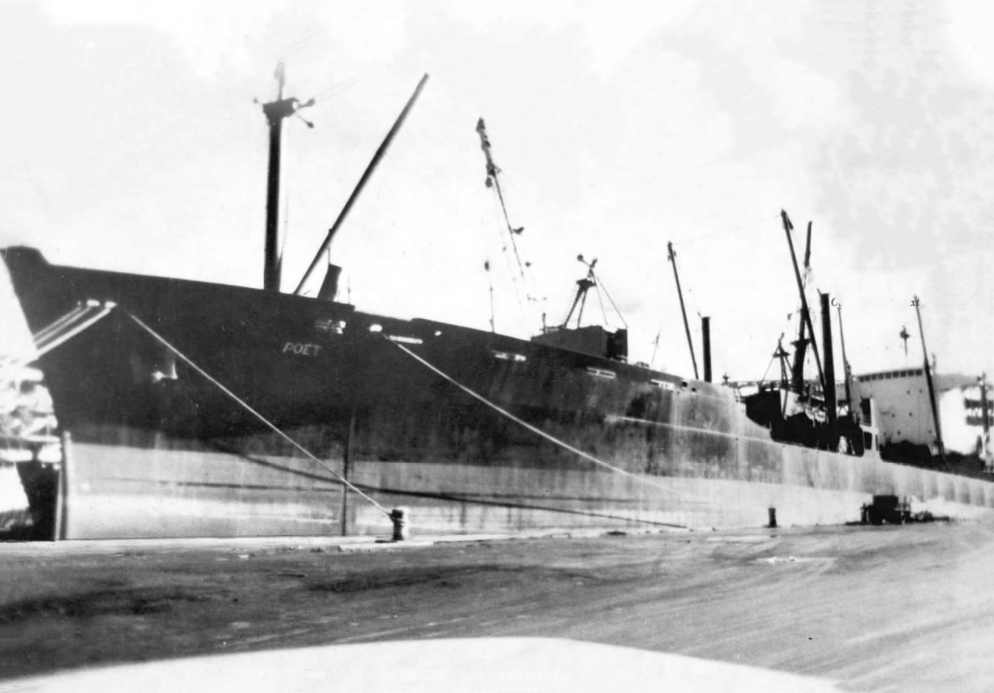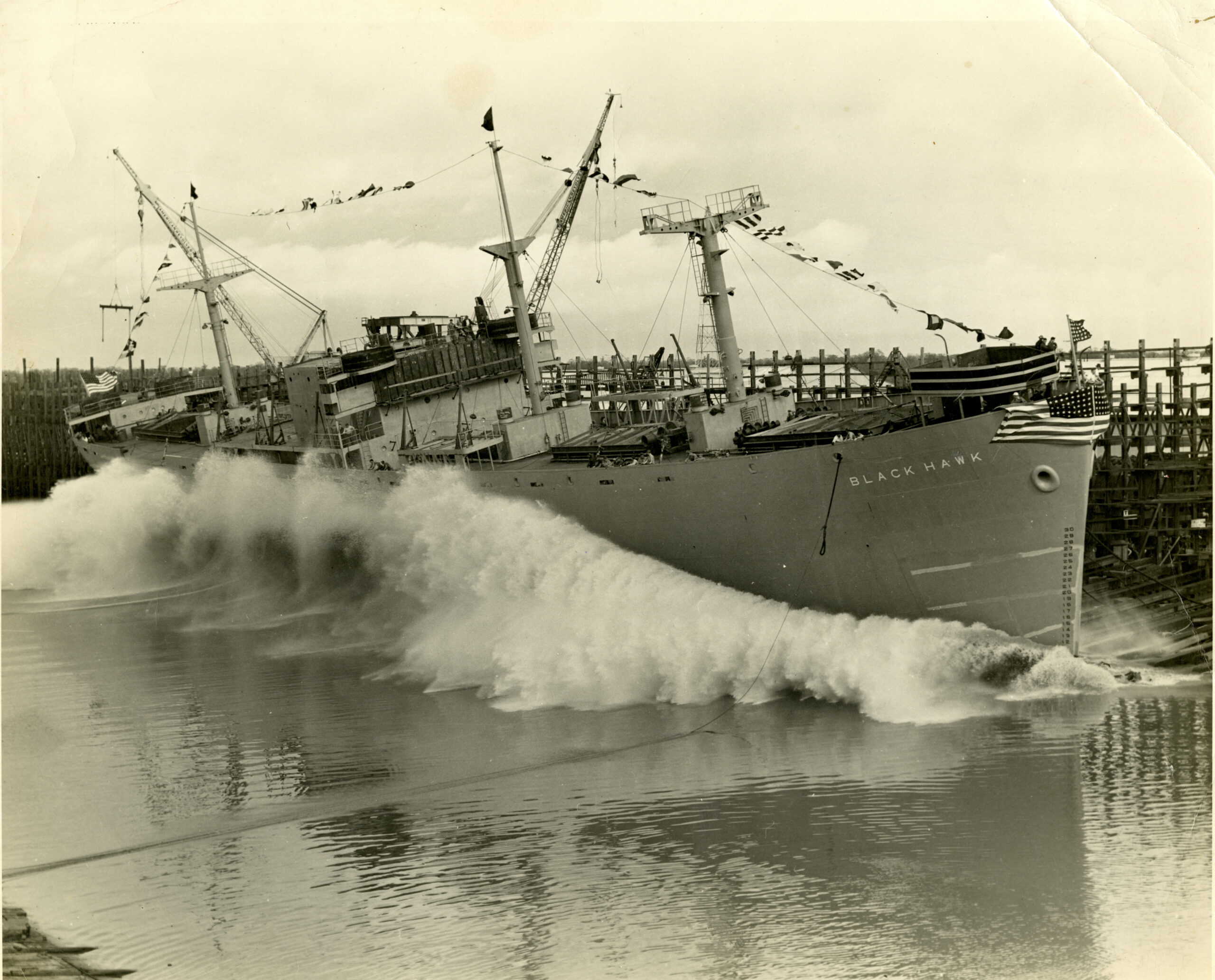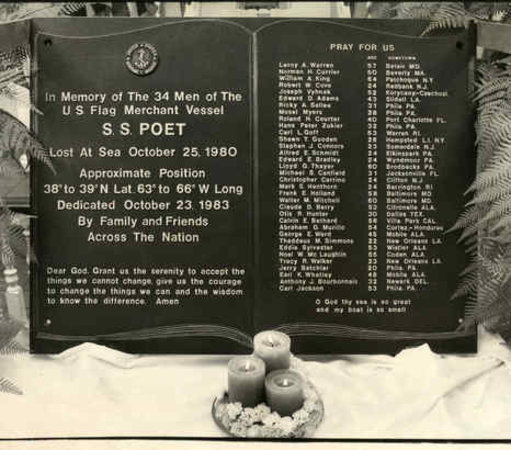Mitch | August 5, 2024 | Boating and Maritime

On October 24, 1980, the cargo ship, SS POET left the port of Philadelphia carrying corn to Egypt. On board was a crew of 34 sailors, including 5 merchant seamen from Mobile, Alabama. The ship sailed into the Bermuda Triangle and was never heard from again. This is how Lattof & Lattof’s connection with the maritime community on the Gulf Coast helped solve the mystery of the disappearance of the SS POET.
The Port of Mobile: A Hub of Maritime Activity
During World War II, the Port of Mobile was a booming maritime town. The shipyards were churning out new cargo ships, known as “Liberty” ships in as little as 90 days. At its high point, the Mobile shipyards were launching a new Liberty ship every week. Essential materials, equipment, and supplies for the war effort were being transported from America’s heartland to the Gulf Coast. In ports such as Mobile, New Orleans, and Houston, products and supplies were loaded onto the brand new Liberty Ships. From there, they were destined for the war zones in Europe, the Pacific, and beyond.

Along with the surge in shipping came a boom in job opportunities for sailors and merchant seaman. This was a welcome situation on the heels of the Great Depression. During the Depression years, the Port of Mobile had seen a 40% drop in shipping and maritime related jobs. The wartime boom provided plenty of employment opportunities for seaman and maritime workers. This demand continued through the Korean War and post-war economic boom of the 1950s. Just as those eras wound down, the Vietnam War reignited the need for experienced sailors. However, as the 1970s turned into the 1980s, local job opportunities began to dwindle in the Mobile area. Local seaman found themselves having to travel longer distances to other ports around the country to catch a ship.
The Final Voyage Of The SS POET
In October, 1980, 5 merchant seaman from Mobile traveled to Philadelphia and signed on to sail aboard the SS POET. The 522-foot long POET had been converted from a World War II troop ship into a bulk cargo carrier. Over the years the ship made numerous transatlantic voyages between the U.S. and foreign ports. She had successfully sailed through all types of weather conditions without incident, until its final fateful voyage.
On October 24, 1980, the POET, with a crew of 34 sailors – including the 5 from Mobile – left the U.S. East Coast with a full load of corn bound for Egypt. The ship vanished near the Bermuda Triangle and was never heard from again. No trace of the SS POET was ever found – no wreckage, no lifeboats, no debris, and no distress call.
Lattof & Lattof’s Former Client Provides Crucial Information
Shortly after the disappearance, the family of one of the crewmembers from Mobile contacted attorneys with Lattof & Lattof for help. They sought to uncover the truth behind the SS POET’s disappearance and to hold accountable those responsible. In the weeks that followed, multiple investigations – official and unofficial – were launched. It was discovered that 2 days after departure, the ship encountered a storm in the vicinity of the Bermuda Triangle. Estimates were that this severe storm had produced 60-70 knot winds and 30-foot seas. Although the ship had weathered similar storms before, it was thought that something may have gone terribly wrong this time.

Although communication with the ship was lost on October 26, its owners did not report it missing until November 3. Worse still, the Coast Guard, delayed starting the search for another 5 days. The extensive search that followed continued for 10 days and encompassed 400,000 square miles, but yielded nothing.
Among the witnesses who provided information about the ship was a merchant seaman, Fridtjof Steelreath, a former Lattof & Lattof client. Steelreath had previously sailed on the SS POET and was present on the day that corn was loaded aboard the vessel in Philadelphia. When he heard about the ship’s disappearance, he contacted Lattof & Lattof with some crucial information. Steelreath witnessed firsthand that the cargo hatches on the ship were in terrible condition and contained numerous rust holes. These openings would allow large volumes of water into the cargo area during heavy seas or rain. He remembered that the corn had been loaded on the ship to full capacity as fully and as tightly as possible.

The Official Inquiry Into The Loss of the SS Poet
Unfortunately, with no wreckage or evidence to examine, the exact cause of the ship’s disappearance proved challenging. The official maritime inquiry was held in Philadelphia – a few blocks from where the POET had departed. During the course of the investigation, there were some wild theories presented as to what had happened. These included:
- The Gambino mobster family had hijacked the ship and taken it to Iran where the corn was exchanged for heroin.
- The CIA had taken the ship, loaded it with weapons secretly bound for U.S. sympathizers in the Middle East.
- The ship was commandeered by operatives for the Reagan presidential campaign as a bargaining chip for the release of hostages. The Ayatolla Khomeini in Iran had been holding 52 Americans captive for over a year. Those hostages were released 11 days after the ship’s disappearance.
It was ultimately determined that the POET was an old rusty ship with leaky hatches and overloaded with corn. It was one of many worn out ships that continued to operate for decades after the War was over. During the storm, water entered the hatches, saturating the corn. As the corn absorbed water, it began expanding. Since the cargo holds had been filled to the maximum, the swollen corn had no room to expand. The pressure of the expanding corn eventually caused the ship’s hull to burst, resulting in the catastrophic sinking.
Lawsuits And Settlements, But No Closure
Following the maritime inquiry, Lattof & Lattof, along with other law firms filed lawsuits against Hawaiian Eugenia Corporation, the ship’s owner. The lawsuits alleged that the owners had been negligent in maintaining and loading the ship. It was also claimed that the captain had been negligent in navigating the storm and that the ship was unseaworthy. Ultimately, the families were awarded a substantial settlement for the loss of the 34 poor souls.
Today, almost 45 years later, no remnant of the SS POET has ever been found. The families have yet to get closure with the loss of their loved ones. A memorial listing the 34 lost shipmates hangs in the Gloria Dei Church in Philadelphia overlooking the POET’s departure site. A similar plaque is on the wall in the Seaman’s International Union Hall in Mobile, Alabama.

Let An Experienced Attorney Answer Questions About Your Maritime Accident
Since 1952, attorneys with the Lattof & Lattof law firm have helped victims of maritime injuries and all types of accidents. It would be our pleasure to review your case with you and discuss your rights, remedies and options. Get in touch with us now for a FREE consultation, by calling us at (251) 432-6691 or completing a request form [link]. We’d be delighted to represent you and your loved ones and help you to obtain the compensation you deserve.